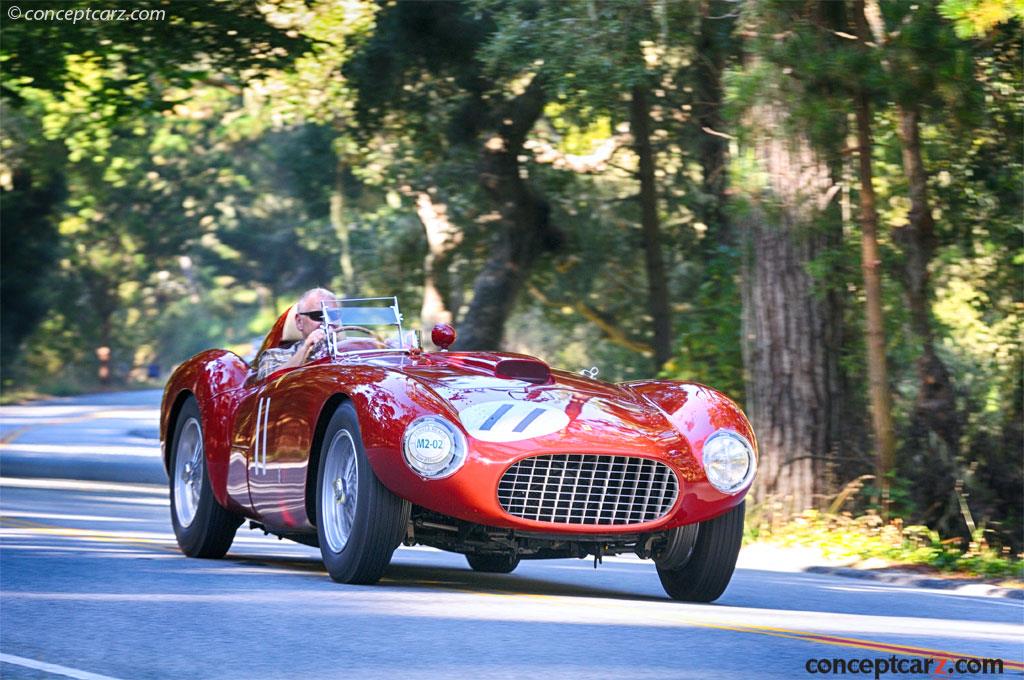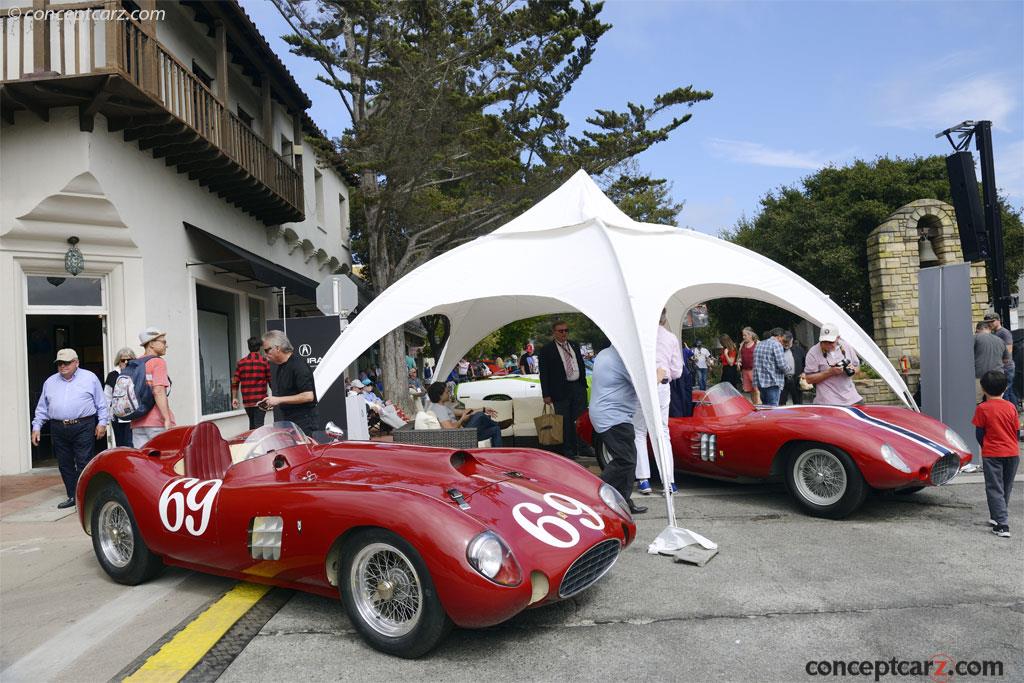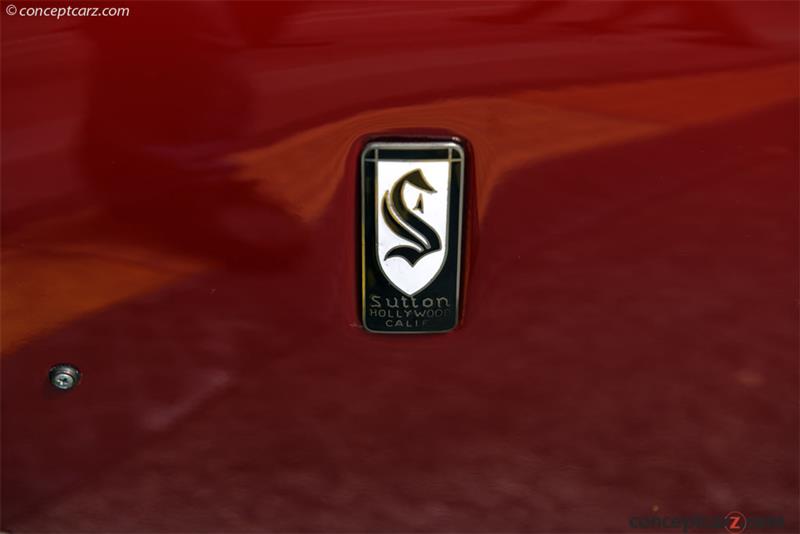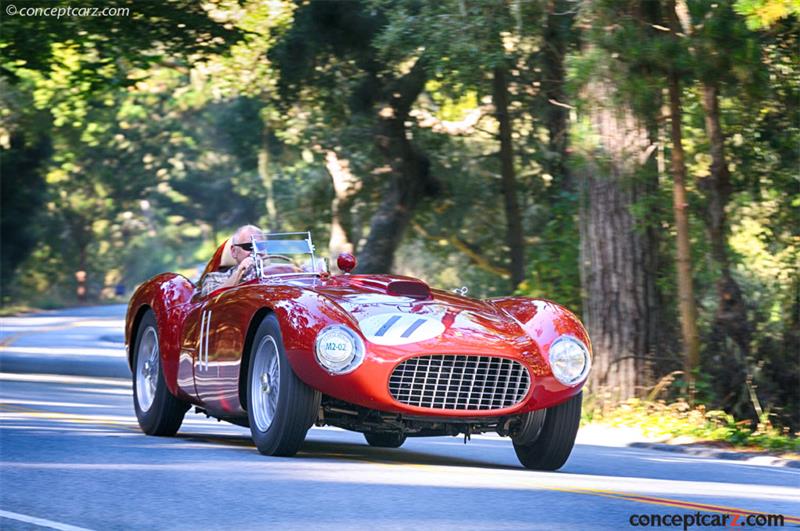The Ferrari marque was founded by Enzo Ferrari in 1939 out of the Alfa Romeo's race division as Auto Avio Costruzioni. Their first car was built in 1940, however many agree that the inception of the company as an auto manufacturer was not until 1947 when the first car bearing a Ferrari badged was completed. That was the year Enzo hired Gioacchino Colombo as his chief engineer. The two individuals had a history that began when they both worked at Alfa Romeo, where Colombo was an apprentice to Vittorio Jano. Colombo's resume included the design of the 158 engine for the Alfetta, which impressed Enzo. In May of 1947, the first Ferrari engine designed by Colombo appeared, a 1.5-liter V12 unit which had built to outperform the 8-cylinder Grand Prix engines he had been responsible for building prior to the War. This engine would be used to power every Ferrari through 1950, including the Tipo 125, 159, and then 166 sports car. 
Spyder
Chassis #: 0384 AM
Engine #: 0384
View info and history
Auction entries : 1The first year of Formula One was 1950 with the first championship race held at Silverstone, United Kingdom. Rules limited engine sizes to 4.5-liters or 1.5-liters with a supercharger. Aside from the race at the Indianapolis 500, the 1.5-liter Alfa Romeo 158 and 159 would win every single race. Both Giuseppe Farina and Juan Manual Fangio won on three occasions. Enzo was not pleased with losing to his former team, and Colombo was soon fired and replaced by Aurelio Lampredi. Lampredi was tasked with designing and building a new engine for the 1951 season. Instead of following the supercharged 1.5-liter course Colombo had taken, Lampredi created a Naturally Aspirated 4.5-liter V12 engine. Near the close of July, Ferrari had its 340 F1 which housed a 4.1 liter V12. This was the start and the team was working on more. By the Italian Grand Prix at Monza, Ferrari introduced its new 375 F1 car with a 4.5-liter displacement. The 4.5-liter engine was given single overhead camshafts and 2 valves per cylinder. Alloy was used for the heads and cylinder blocks which helped reduce the overall weight. Although the new 4.5-liter was larger than the 4.1-liter unit, it did not produce that much more power. It was enough, however, for Alberto Ascari to score a second-place finish in its racing debut. It would go on to become Alfa Romeo's main competition, although Alfa Romeo did win four races of the season and Juan Manuel Fangio was the Driver's Champion. For the 1952 season, with Alfa Romeo unable to fund a new car, withdrew from racing. This left Ferrari as the only serious Formula One contender. This led World Championship organizers to run their races for Formula Two, which meant 2-liter naturally aspirated engines, meaning larger fields and a greater diversity of cars. Alberto Ascari would finish the season as the Driver's Champion driving for Scuderia Ferrari. 
Spyder
Chassis #: 0478 AM
View info and historyAlthough the Lempredi 4.5-liter engine was obsolete for Grand Prix racing, it found new ways to compete, powering a small series of Ferrari sports racers called the 375 MMs during the 1953 and 1954 season. For the 1954 Sports Car World Championship, Ferrari built a small number of large-capacity 4.9-liter Spyders. They were given a 102.4-inch wheelbase chassis, de Dion rear suspension, and a rear-mounted gearbox. The Tipo 113 engine was based on the 375 MM with an 84mm bore and 74.5mm stroke. It had a single spark plug per cylinder bank, two magnetos, and three Weber 46 DCF/3 carburetors. The 375 Plus failed to finish its first two races at the Giro di Sicilia and the Mille Miglia. At the 1954 24 Hours of LeMans, at the Circuit de la Sarthe, Le Mans, France, José Froilán González, and Maurice Trintignant won the race in a Ferrari 375 Plus. They had managed to outpace the aerodynamic 3.4-liter Jaguar D-Type by less than 5km (half a lap). 
Spyder
Chassis #: 0478 AM
View info and historyThe 375 Plus later won at the Agadir GP and Silverstone International. Umberto Magliolis scored an impressive victory at the Carrera Panamericana, which would mark the final time that race would run as it was canceled the following year due to the LeMans tragedy. The 375 Plus won two of the six rounds earning Ferrari the 1954 World Sportscar Championship. Its final major victory was in 1955 at the 1000km Buenos Aires. Many other races were won by the 375 Plus in both North and South Americas, including Dan Gurney's victory in Paramount Ranch and Palm Springs, along with a second-place finish in the Grand Prix Riverside.
by Daniel Vaughan | Sep 2019

Spyder
Chassis #: 0384 AM
Engine #: 0384
View info and history
Auction entries : 1

Spyder
Chassis #: 0478 AM
View info and history

Spyder
Chassis #: 0478 AM
View info and history
by Daniel Vaughan | Sep 2019
Related Reading : Ferrari 375 Plus History
Enzo Ferrari and Gioacchino Colombo worked together at Alfa Romeo. When Enzo started his own company in 1947, he brought Colombo with him. Colombo designed a V12 engine that would be used, in various displacements, to power every Ferrari through 1950. The 1.5-liter engine was heavily inspired by his work at Alfa Romeo, and with the help of a supercharger, would satisfy Grand Prix regulations. Enzo....
Continue Reading >>
Continue Reading >>
1954 Ferrari 375 Plus Vehicle Profiles
Recent Vehicle Additions
Related Automotive News

Renowned Racing Legends Grant Exclusive Nod to the Rolex Monterey Motorsports Reunion for New Run Groups
As the Rolex Monterey Motorsports Reunion celebrates the Golden Anniversary of historic racing at Montereys WeatherTech Raceway Laguna Seca, the illustrious gathering also honors the history and significant achievements throughout time. It seems fitting...
Scuderia Ugolini: 1959 Formula One Season
While the name Ferrari is recognized the world-over, Ugolini, on the other hand, is only a name recognized by those very knowledgeable of motor racing and football. However, the name is nearly as vitally important to the world of motor sport. In 1959,...
Luigi Musso: Talented, Tempting and Troubled
Following Alberto Ascaris back-to-back titles in 1952 and 1953 there have been no Italian Formula One World Champions. While there has been a great amount of hope throughout the years, Italians have been left without a World Champion. Perhaps, it could...

1954 Carrera Panamericana: Courage to Go On
Suddenly the Ferrari 340 Mexico would break loose on Hill. Careening down over the ledge, the car would be battered and bruised, coming to a rest finally with its occupants none the worse for wear. It would be a scary moment and the mangled bodywork...

1962 Monaco Grand Prix: McLaren Carries the Cooper Flag back to the Top
By the beginning of the 1962 Formula One season Jack Brabham had left Cooper to form his own racing team. It seemed the glories days of the double World Championship were well and truly behind them. However, left in Brabhams stead would be a man very...



























